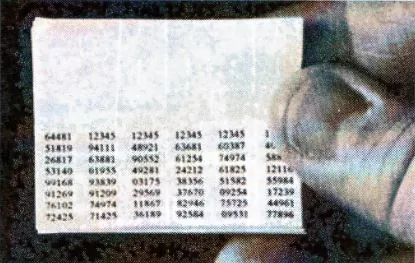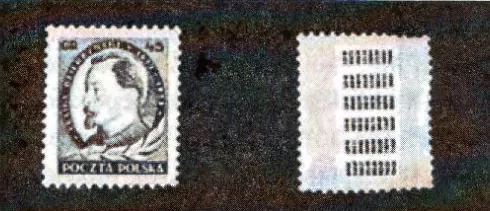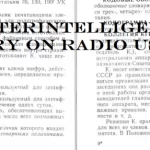A one-time pad is a sheet of paper, on which random numbers arranged in groups or five (variations exist – Translator) are printed. Numbers on different sheets should vary. Sheet size depends on the delivery and concealment methods.

Purpose: one-time pads are used for encoding and decoding messages. Such correspondence is completely anonymous and resistant to decryption.
The encoding is divided in two stages:
- The letters of the original message are converted into numbers.
- The same numbers are added to numbers from the notepad using simple math operations.
Since the numbers on the cipher pad’s sheets are absolutely random, every sheet has to be destroyed to avoid being compromised.
Many ciphers use math keys, generated using algorithms. Such keys are not random and can be decrypted by modern computers. A major issue of one-time pads is the necessity to replace them after all sheets are used. Usually one-time pads are small.

A single sheet of a one-time pad placed on the opposite side of a postal stamp, size 2 x 0.8 cm.
How to use the one-time pad
Every letter of the alphabet has its own number equivalent.

Replace the letters with numbers from the table.

Divide the numbers from the one-time pad into pairs and write them in line (in this example we start from the last line in the cipher). Add the numbers from the message.
(Attention: use simple arithmetic addition. If sum exceeds 100, write last the two digits in your result)

Then the message is divided into groups of five and transmitted.

To decode the message, the recipient uses the same page from his own one-time pad. Numbers are broken into pairs once again and subtracted.

Sometimes it’s necessary to add 100 to the number when subtracting. Replacing numbers with letters we can decode the original text.

Official designation – one-time encoding notepad (pad size and disguise should be noted)
Estimated 1948. Instruction dated on 1975
Source
Мелтон, Уоллес, Роберт, Шлезингер, Генри Кит. Искусство шпионажа. Тайная история спецтехники ЦРУ. Москва.2013, c. 113 (Spycraft: The Secret History of the CIA’s Spytechs)



